Use our editable instructional slide deck to break down the fundamentals of electricity and circuits for your students.
Electricity For Kids!
You know that helplessness you feel when the power goes out?
Ironically, it’s both the literal and figurative powerlessness that makes us realize how often we take electricity for granted.
No lights. No refrigeration. No heat or air conditioning. No hot water.
No comfort.
And if it is widespread enough, there’s no telling how long it will be before it’s fixed.
That’s because powering up gadgets that use electricity might seem as easy as flipping a switch. But in reality, electrical circuits are an intricate system of electrons and conductors working harmoniously to sustain our modern world.
Teach Starter has created a set of electricity slides ready-made for your classroom! In this science class teaching presentation, you will guide your students in understanding the elements of energy found in electricity and circuits. Let’s take a look at some of the common questions that may arise during this unit of study!
What Is Electrical Energy?
Electricity is a type of energy that is generated by the movement of small charged particles known as electrons. This energy is used to power many different everyday devices and appliances. Electricity can be found in batteries, power sockets, and even in natural occurrences such as lightning.
Whenever we plug in a device like a computer or a phone or switch on a light, we are using electrical energy. It travels through wires and circuits, allowing us to do all sorts of useful things, such as illuminating rooms and running our gadgets.
What Is a Circuit?
An electrical circuit is a pathway that allows electricity to flow and perform different tasks. It is made up of different parts that work together to achieve this purpose.
The circuit begins with a mighty power source, such as a battery or electrical outlet, where the electricity begins its journey. The wires or conductors act as the roads in the circuit, transmitting electricity from the power source to the required destination.
But wait, there’s more! Circuits also contain components that utilize electricity to perform different tasks, making them incredibly versatile. For example, a light bulb uses electricity to produce light, while a fan uses it to spin and keep you cool.
And the best part? Circuits may even feature switches, which operate like traffic signals for electricity. A switch can turn the circuit on, allowing electricity to flow, or off, stopping the flow.
When all the parts are correctly connected, electricity can move through the circuit, and the components can easily perform their functions. This mechanism powers everything from household lights and appliances to everyday gadgets and beyond. It’s truly remarkable how a circuit is an electrical pathway that enables things to work like magic!
How to Use Our Electricity and Electrical Circuits Lesson With Your Students
This 27-slide teaching presentation was designed for a classroom setting to introduce and discuss the concepts of:
- Atoms
- Electrons
- Electrical energy
- Static electricity
- Current electricity
- Conductors
- Insulators
- Circuits
Specifically, by looking at examples of electrical energy, students will walk away from this lesson with the ability to:
- Define electrical energy
- Compare the properties of static and current electricity
- Differentiate between conductors and insulators
- Describe and identify the parts of a circuit
- Explain what happens when a circuit is complete or incomplete
Students can use this presentation as a reference or guide when working on any activity or classwork where students are working to identify the parts used in an electric circuit. For example:
How Do Circuits Work? Worksheet
What Is Conduction? Presentation
More Ways to Make Explaining Circuits a Blast with Your Students
Take this presentation even further with more activities to solidify learning about electricity and circuits.
Pre-Lesson Activity
Students can be assigned this instructional slide deck as independent reading, either at home or prior to starting the lesson together as a group. Ask students to provide examples of each of the vocabulary words to assess their understanding.
Turn & Talk
Ask students to write questions on a sticky note as the resource is presented, then put students into groups of 3 or 4 to help each other answer the questions on their sticky notes.
Be the Teacher
As a post-lesson activity, ask students what they would put on a quiz if they were the teacher. Ask students to write their own 5-question quiz using the information in the presentation. Then, have them trade papers with another student to take the quiz.
Easily Prepare This Resource for Your Students
If you are ready to get your hands on this set of teaching slides, head on over to the green download button! Here, you will find the editable Google Slides version of this resource.
This resource was created by Gaby Perez, a teacher in Texas and a Teach Starter Collaborator.
Extra Electricity Resources for Your Classroom
Looking for a way to keep your students engaged throughout the presentation? Download the electricity and circuits guided notes that go along with this PowerPoint, or explore more science resources created by teachers for your classroom!
[resource:4835165] [resource:4895290] [resource:4895290]
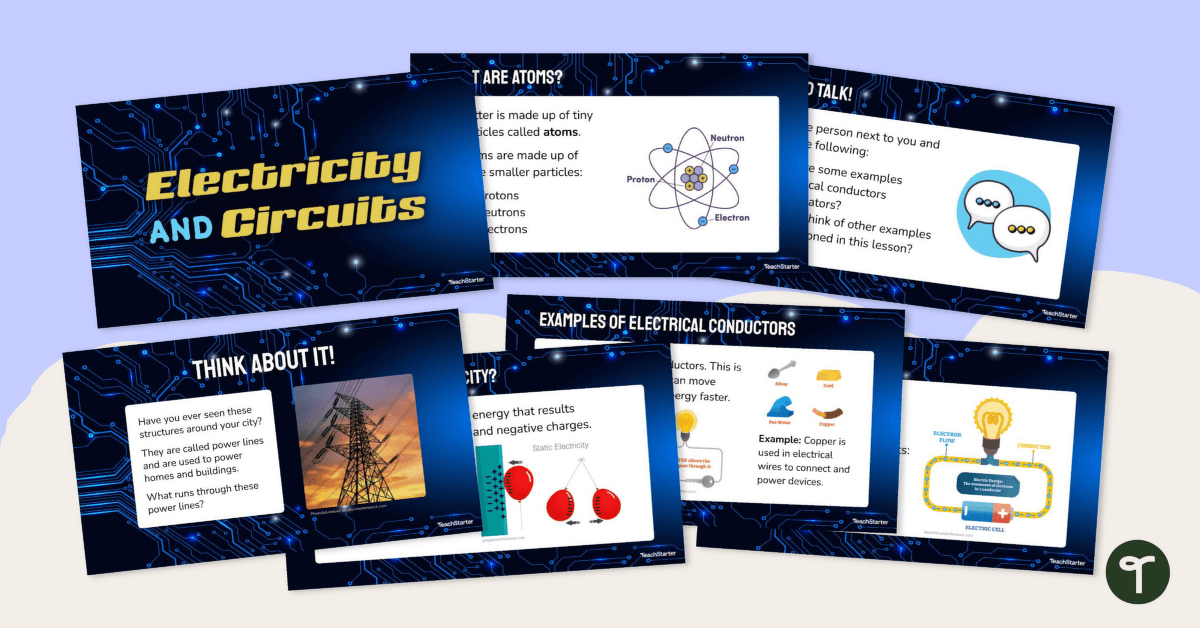

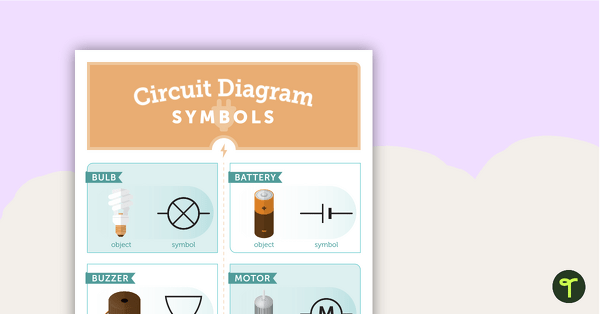
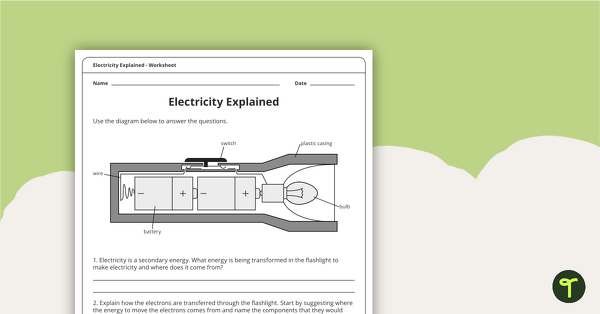
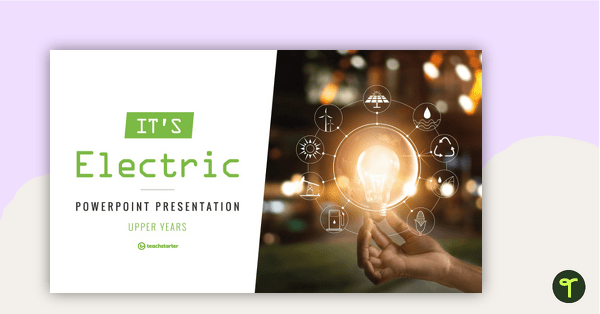
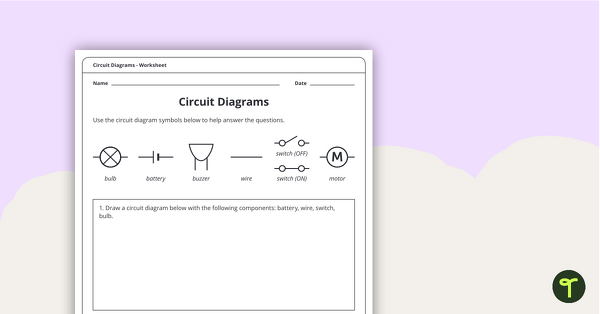
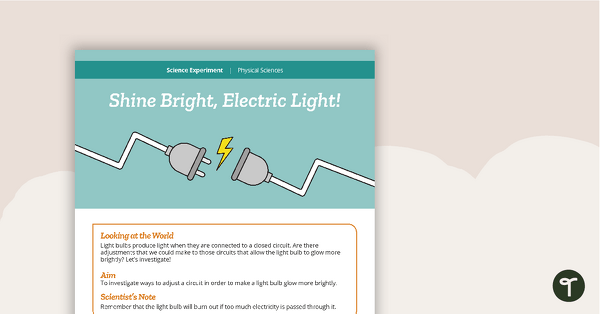
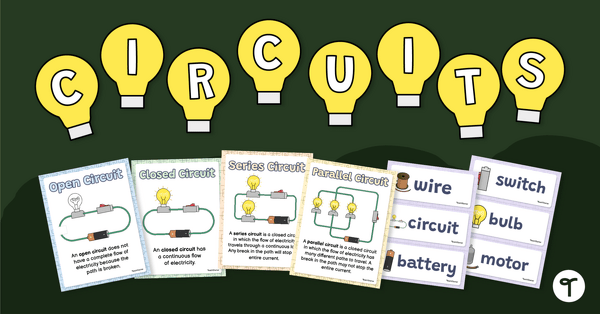
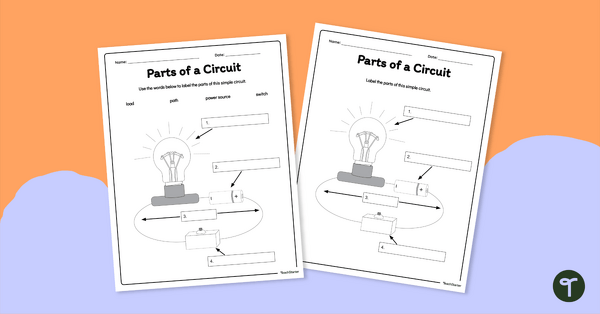
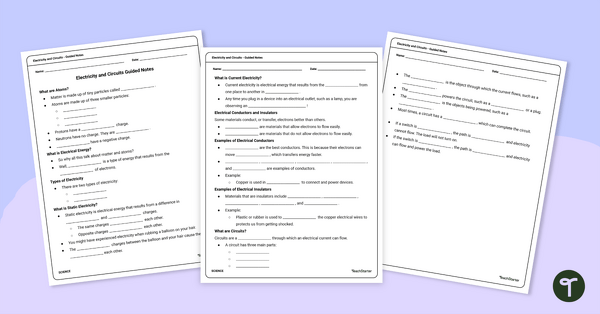
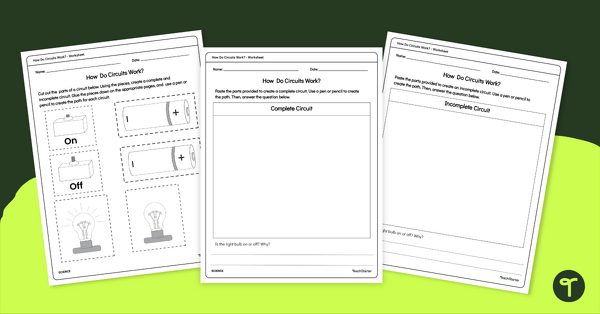
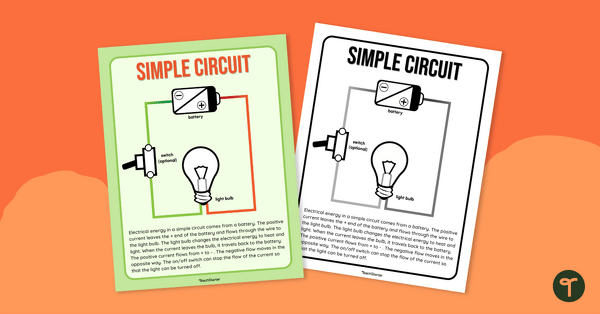
0 Comments
Write a review to help other teachers and parents like yourself. If you'd like to request a change to this resource, or report an error, select the corresponding tab above.